OALP XIX Seminar 13 (Chile Part 2)
Categories: Uncategorized
Sunday, February 23, 2020
Sunday morning, our class enjoyed a hike through Monumento Natural Cerro Nielol. Felipe, our guide, works with Sendero de Chile, an organization created to educate the citizens of Chile about the natural environment. The park encompasses about 250 acres. We did not see much wildlife, but were told the area has many species of plants and wildlife. We saw six 30-foot tall Mapuche statues, placed there to remember the native people. We were told that not many Chileans use parks like this one, and they are working to bring awareness to their nature parks to have more people visit them.
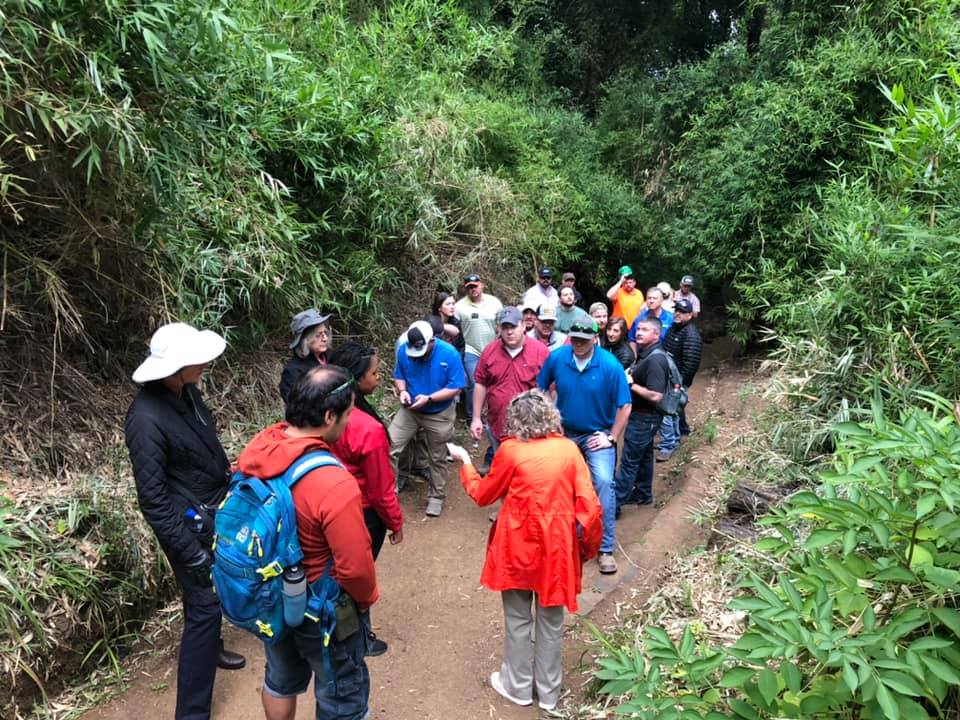
Later in the day we traveled toward the coast on our tour bus. From the bus we had a brief walk toward the Mokul River and hopped on a ferry along with the locals from the island and visitors. After the short ferry ride, we reached the other side of the river and most of the group climbed up and over the volcanic sand hill for a beautiful view of the Pacific Ocean. A few of us even dipped our feet in the very cold ocean then warmed them on the black volcanic sand.
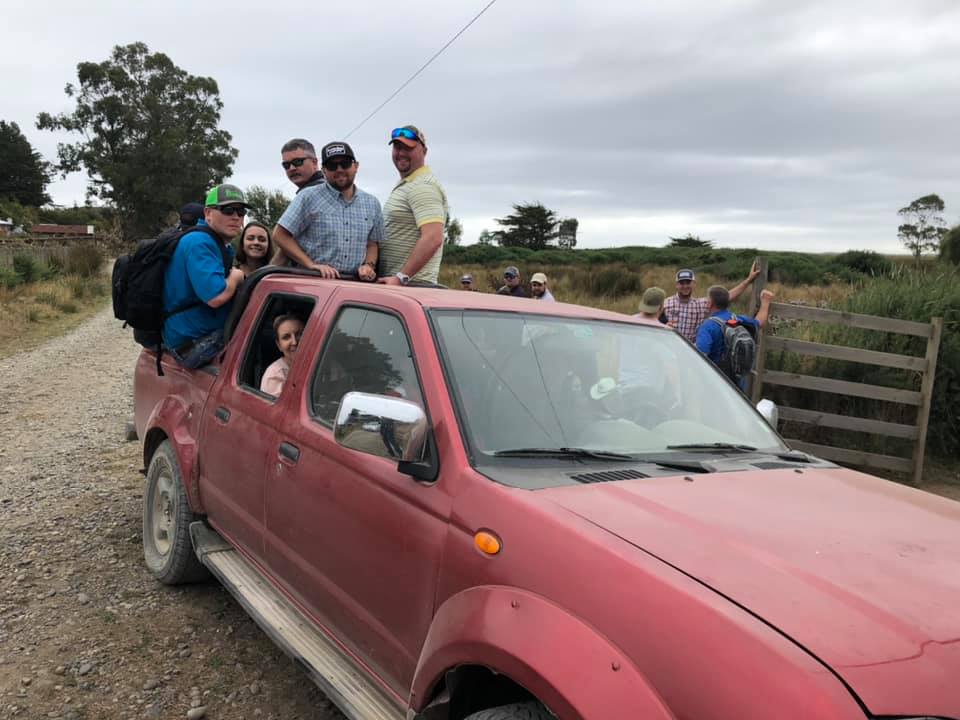
After defeating the hill, we all rode in local vehicles and drove to Monkul Kewen Ko. They invited us into their thatched hut called a Raku where we were served lunch. The Raku was built to show the tourists how the Mapuche natives used to live. We started with an interesting mussel ceviche and then had lamb that was cooked outside over an open fire, with potatoes and green beans. The area was turned into wetlands in 1960 after an enormous earthquake and tsunami occurred and most of the farmland sank. They have been making the area into an ecotourism venue where they want to teach people about the native Mapuche people. After our meal, we watched their tourism/informational videos about the area. We then climbed another massive hill and got to enjoy great views of the wetlands. We traveled back to our hotel where we had a late dinner.
Monday, February 24, 2020
Andreas Kobrich, Executive Secretary for the Society for Agricultural Development of Temuco, gave the first presentation of the day. The purpose of the organization is to develop the agricultural industry of the area around Temuco by educating small and medium scale farmers to increase production and profitability. This area of Chile has a long and checkered history of interaction between native tribes and the arrival of Europeans and other people, much like Oklahoma. This past has left lingering issues in the area that this organizations hopes to play a role in overcoming through agricultural development. One issue is the water situation in Chile. In the media, the lack of water for residents has been widely documented. In this area of Chile there is abundant water, however people have not been wise in efficiently using it or choosing home and business sites that have proven water available before building. The country is now drilling deep water wells out of necessity over much of the area and people are finding abundant water.
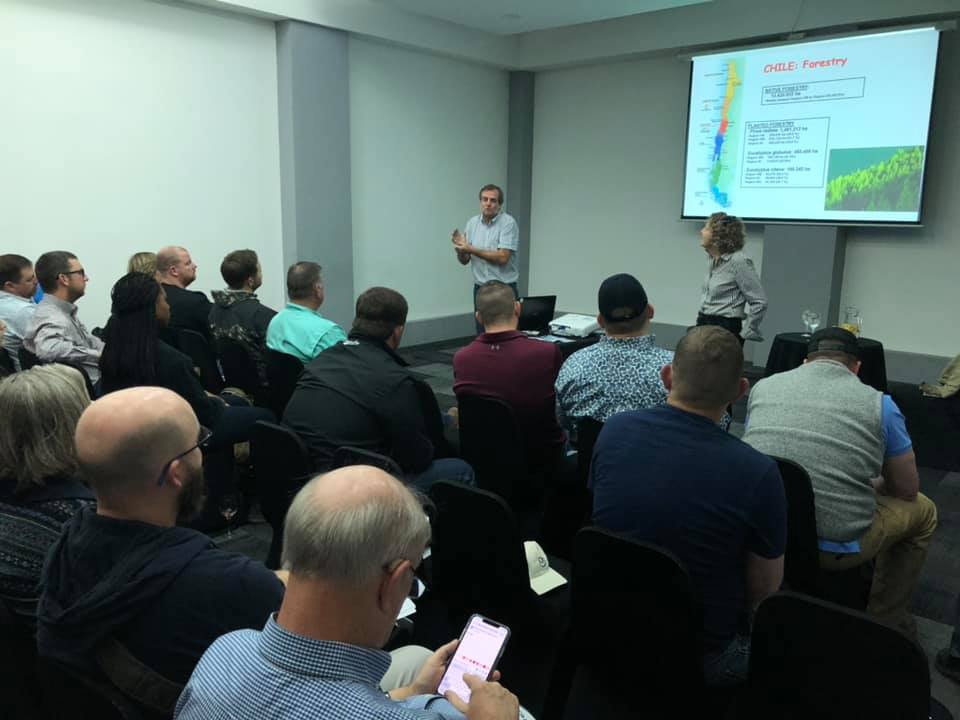
Our next trip to Llamas del Sur was a pleasant and entertaining experience. The animals were friendly and curious, and they loved interacting with our large group of people. Our host, Alejandro, gave us an informative tour and discussion of the farm and the animals. The farm uses a rotational grazing program with ryegrass as their main forage base. The farm business is centered on production of breeding animals and agritourism. There is a small store filled with high quality alpaca wool garments on the property as well as a goat petting pen and an outdoor dining area. We enjoyed a fantastic outdoor meal of traditional empanadas and Chilean wine.
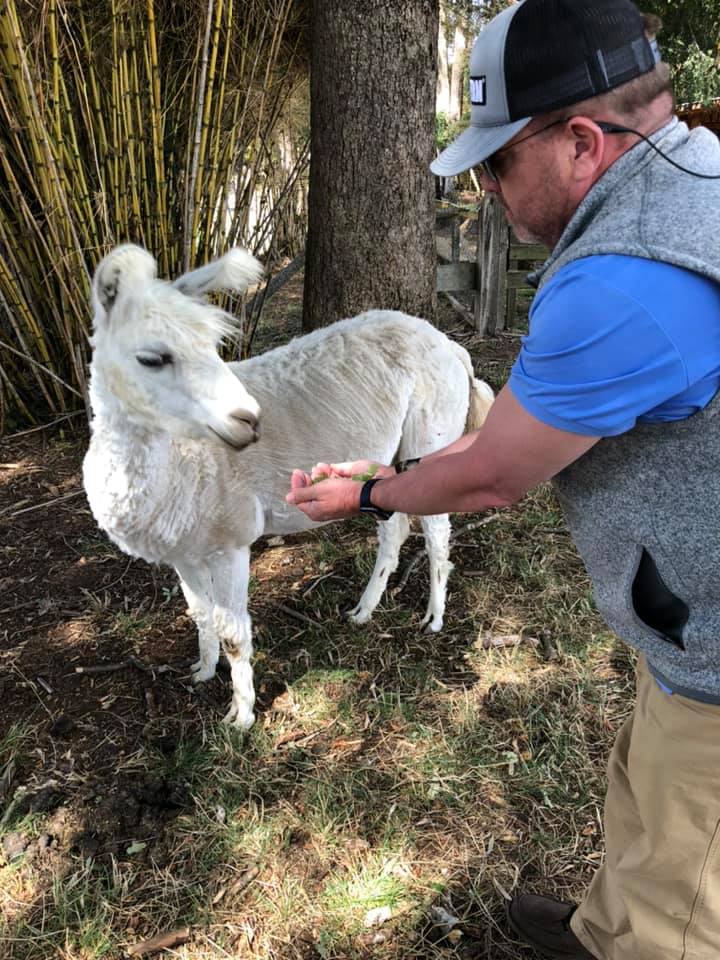
Semillas Baer was our third stop of the day. This is a family-operated seed production company that provides different varieties of wheat, canola, barley, lupine, and other seeds to local farmers. Two generations of the family were present to give tours of the facility. The goal of the family is to breed varieties of crops that are well-suited for both the area immediately adjacent to the facility and throughout Chile. Chile has unique soils and climate, so the Semillas Baer Company fills a much needed void for Chilean farmers. One of the most unique and promising crops in the facility was lupine. It is a broadleaf cool-season plant with a seed like a black-eyed pea. It varies in quality and characteristics, but it has a high protein (up to 44%) and fat content that makes it an intriguing animal feed. It has become profitable in Chile because of its popularity in the salmon feeding business. The high protein and low tannin variety of seeds has also shown to increase conception rate in the resident sheep herd around the facility. The most popular event of the year is a field day held by the company to showcase new varieties for farmers to purchase and to gain valuable feedback from farmers regarding the performance of the previous year’s varieties. Overall, it was a fantastic experience to see a successful family-owned agribusiness thrive and fill a valuable niche for the farmers of Chile.
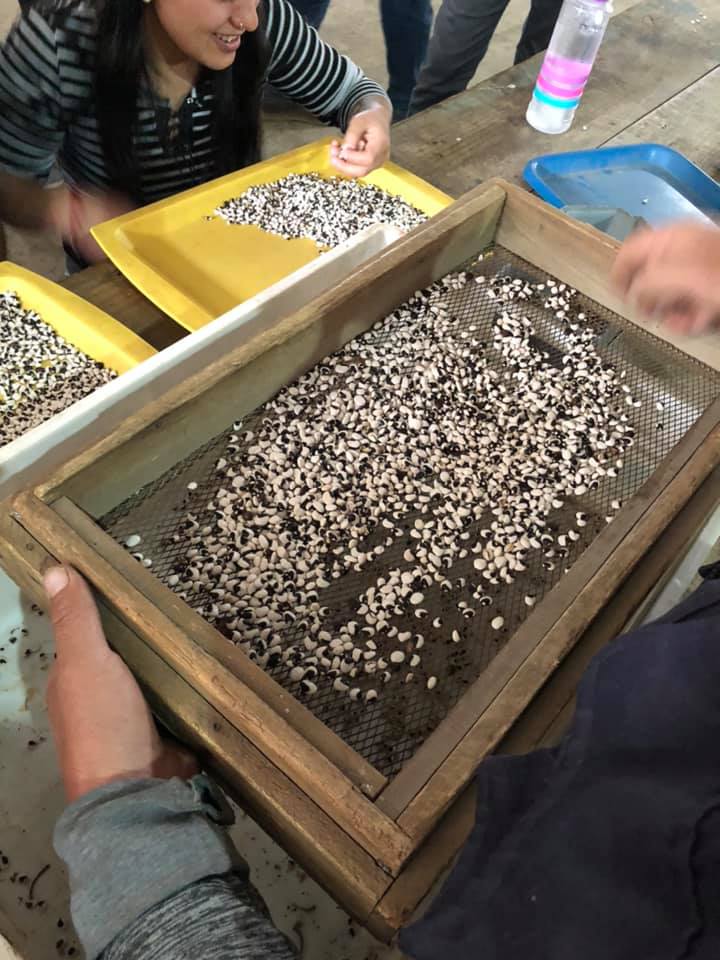
Tuesday, February 25, 2020
We visited small fruit and vegetable farms in the Mapuche tribe area. The first farm we visited belonged to a lady named Francisca and her family. She has been producing raspberries for four years and sells all of her produce at the local farmers market. She has been experimenting with different varieties of raspberries. They have a reservoir that stores over 250,000 gallons of rainfall water runoff, and they also pump water from the river using a solar-powered pump. Her farm is GAP certified. They also have a greenhouse where they grow many different vegetables for the market. The next farm we went to was owned by Juan Carlos. He has about 20 acres and has been growing cabbage, broccoli, cauliflower, and celery. All of his water for irrigation comes from a natural spring. He also has a side business where people come from the city to relax and enjoy their own native culture.
At our next stop, we visited a Raku-type hut where we were served sopapillas, salsa, cheese, jelly, roasted wheat coffee, and tea. The food was very good. The host was very gracious, and we enjoyed partaking in some of the native rituals of this area.
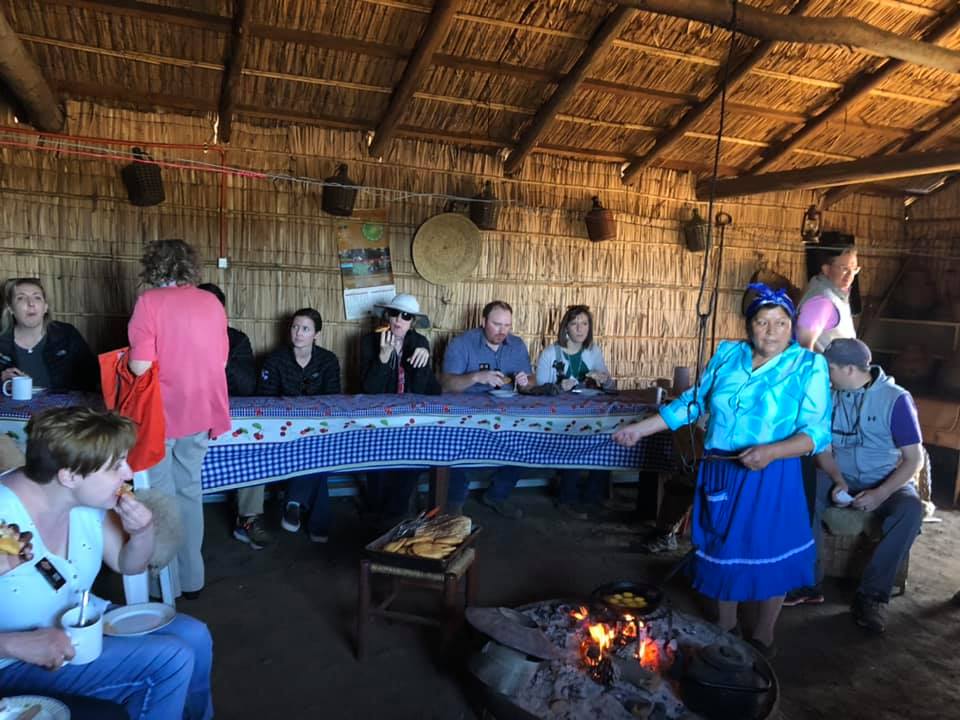
Our final stop was at a 3-acre farm in the driest part of this area. They obtain water from a deep well and also have a reservoir that holds about 275,000 gallons of water. The reservoir has a roof which helps catch rainwater and prevents evaporation. This farm, like many of the other farms we visited, produce fruits and vegetables to be sold at the farmers market. It was very informational to see how some of the people in this area have been able to survive and adapt to the current conditions of this region. The INDAP is working closely with many the local producers to assist with agriculture produce information and/or financial assistance. We arrived back at the hotel earlier than usual and were able to have a little time for ourselves. Many of us were able to find some very authentic dining at a local restaurant and were then able to have a night cap, which is always the highlight of the day.
Wednesday, February 26, 2020
We began the day by visiting with Chilean farmer Andres Vera. He produces grains, including wheat and rapeseed, and focuses on the fattening and finishing of beef cattle on approximately 600 hectares he owns and leases. Some of his wheat is stored in silo bags in the field. In addition to his profession as a farmer, Vera also is the regional president of his local farmers’ discussion group. His discussion group consists of 12-15 farmers who meet once a month to share experiences and provide suggestions to improve production.
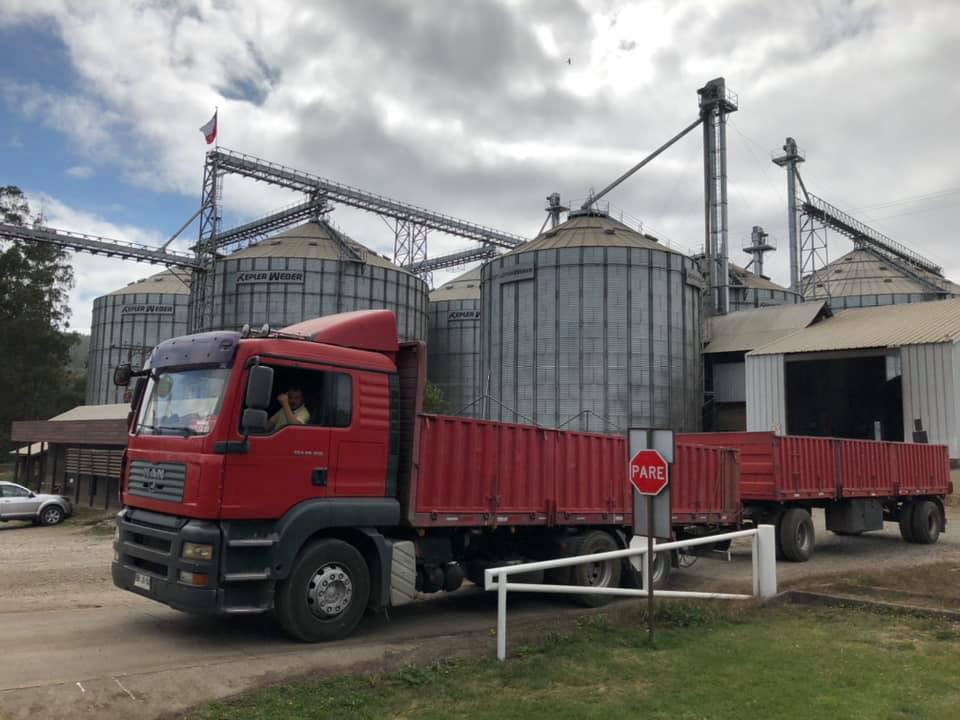
Our next stop was Empresas Gorbea where we witnessed several phases of the family-owned mill at work. We saw the offloading of rapeseed and the process of turning the rapeseed into oil. Additionally, we peeked into their testing lab. We enjoyed a hearty bowl of soup at Nicris Restaurant before traveling to Puerto Varas for an evening of shopping, dinner, and sightseeing. We wrapped up the day by arriving at our last hotel of the trip where we had a breathtaking view of Osorno Volcano.
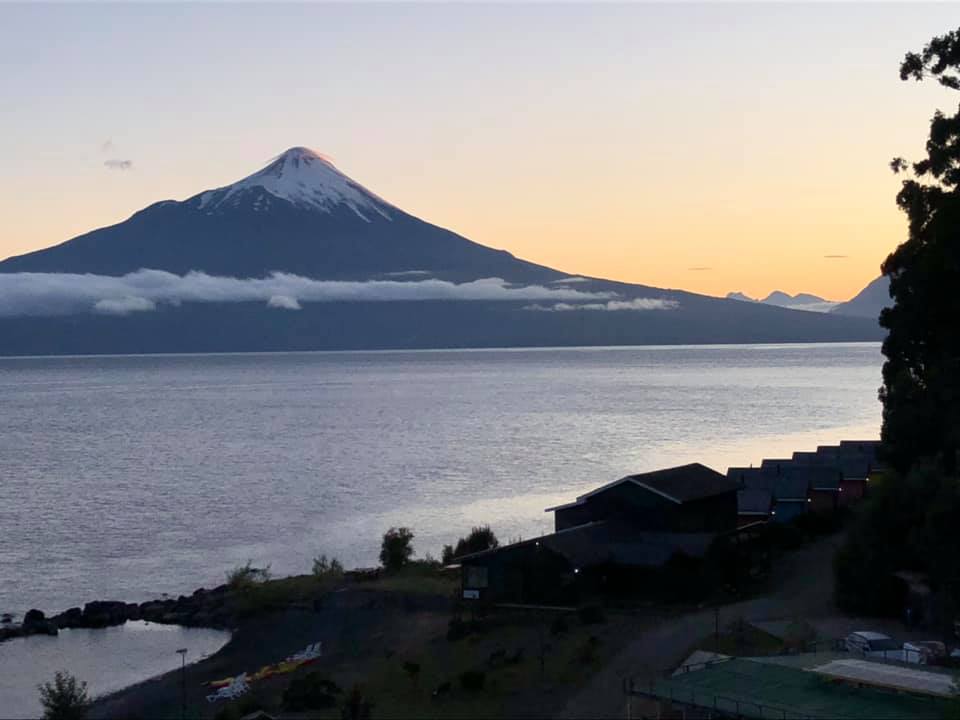
Thursday, February 27, 2020
We started our day with a bus ride to meet Ricardo Hevia, owner and operator of Ganadera California Angus in Osorno, Chile. Mr. Hevia has quite the operation built with well-known registered Angus bloodlines from the United States. If you could hear Ricardo speak, you would have no idea you weren’t on an American Angus operation, which is the model for his operation. Ricardo was part of an extension program known as California Chile where he was able to travel to California. While on his trips, he fell in love the with the Angus breed of cattle. “Black Angus” are his breed of choice and don’t try to influence his decision making by bringing up Red Angus. Mr. Hevia strictly pastures his cattle – there is no grain finishing. He showed us his heifers, cows and bulls, as well as his working facilities. Later, he explained the differences in the American beef industry and the Chilean beef industry. The most notable difference is a Chilean producer does not take his animals to a sale barn. The buyers in Chile will come to the ranch and make you an offer. If you accept their offer, they will come pick up your animals and take them to their slaughter facility.
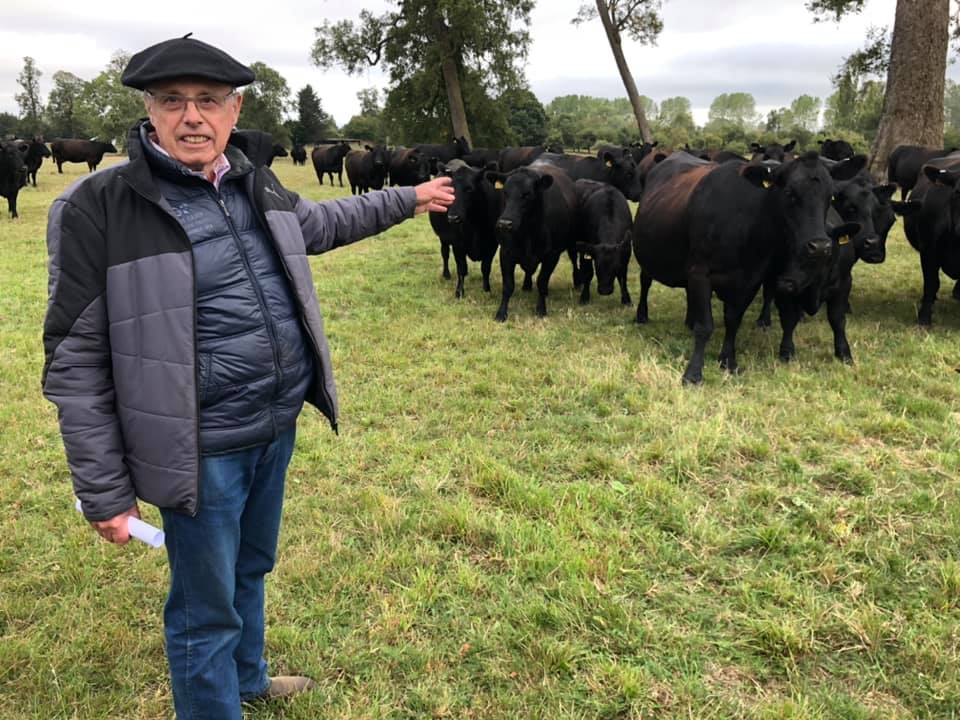
After lunch we traveled to visit Nelson Garcia and his nationally renowned Chilean Rodeo Horse operation. He explained to us the requirements and look of the Chilean rodeo horse which is much smaller than the American Quarter Horses used in American Rodeos. The horses weren’t the only differences in American and Chilean rodeos. They do not rope calves in Chilean rodeos. Instead, their events look much like team cutting horse competitions here in the United States. The Chilean rodeo cowboys work the steers around a circle arena in and out of gated areas for a score. We finished our visit there with a traditional Chilean tea. Later that night, we had a farewell dinner at the hotel and a ceremonial burning of the coin bag.
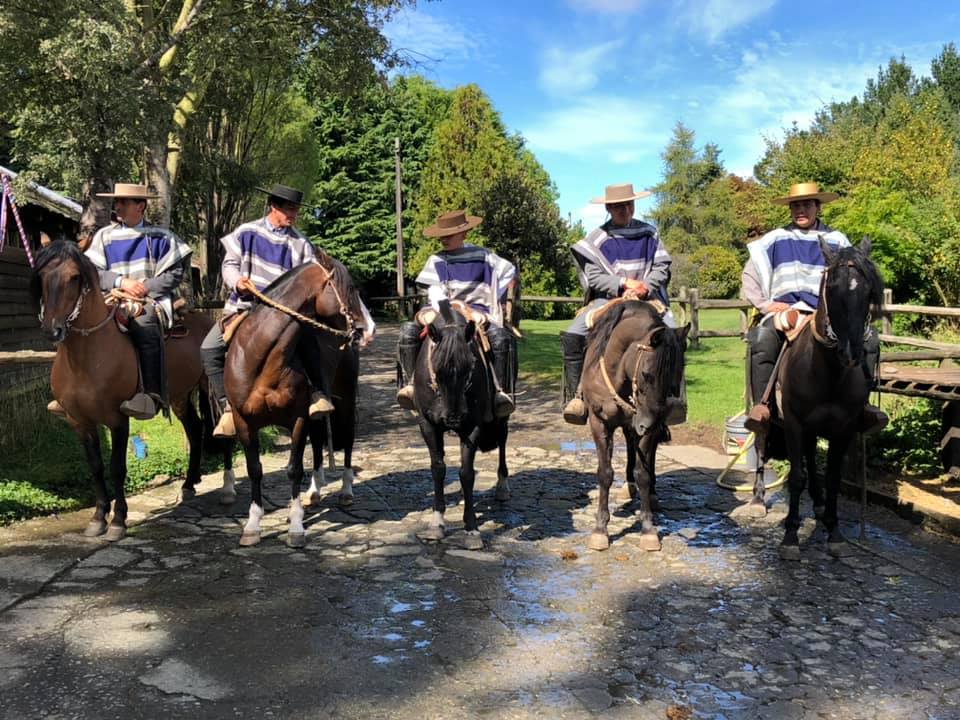
Friday, February 28, 2020
Our day began with breakfast and coffee overlooking Llanquihue Lake and the Osorno volcano. We packed our bags and loaded them on the bus and set off on an excursion to see some local sights before we headed to the airport. Our first stop of the morning was at a national park called Vicente Perez Rosales, where we walked along a pathway over waterfalls and whitewater rapids. We spent about a half hour there looking at the waterfalls, taking pictures, and being amazed at the pureness of the glacial water flowing all around us.
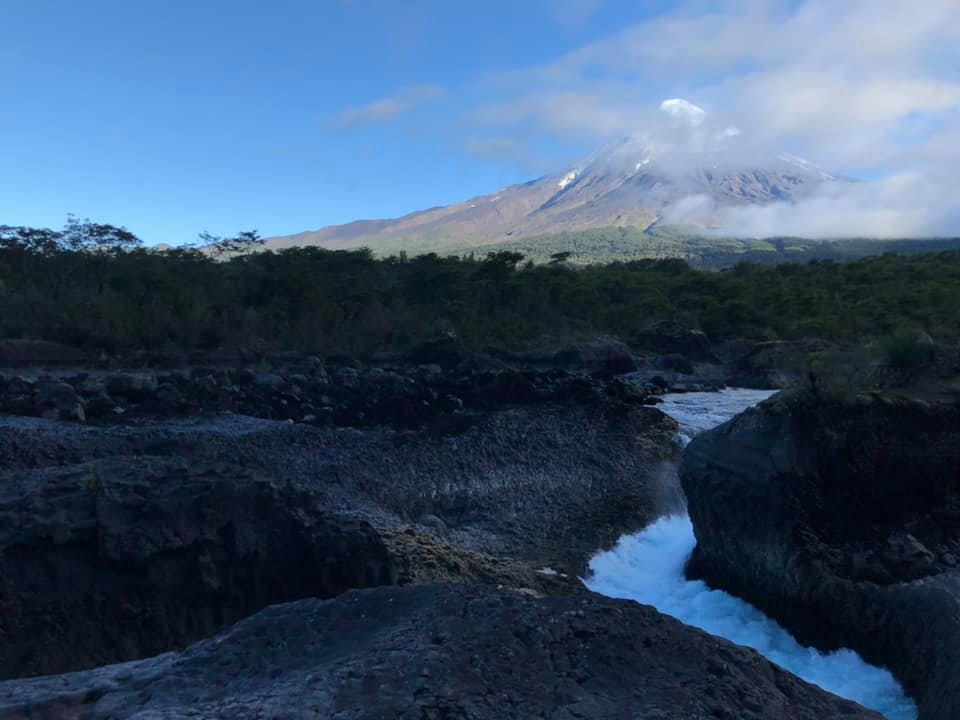
We loaded back up and headed up the river toward Todos los Santos Lake. As we drove, our tour guide Terry told us all about the volcanoes in Chile. There are 55 active volcanoes in Chile. Two of them we had been driving in the shadows of for the past three days. We then walked around the shores of Todos los Santos Lake which was a beautiful lake flanked on all sides by steep mountains. The shoreline was mostly volcanic sand and rock which reminds us how the lake was formed. It was a glacial basin with rivers flowing through it until lava flows from Osorno and Calbuco volcanoes formed a dam across the lower part of the valley. The area gradually began to fill and formed the lake. After our stop at the Lake, we headed back to Puerto Varas for a meeting with Tompkins Conservation.
Our first impression of Tompkins Conservation was the huge 200+ year old home that was actively under restoration that they use as their office. This house is on a hill overlooking the town of Puerto Varas and Lake Llanquihue. This was the first place in Chile where we were asked to remove our shoes as we walked in the front door to help preserve the wood floors of the office. After a tour of the downstairs of the building, we began discussions about what they strive to do. Most of us did not know what Tompkins stood for until we turned the corner into an office and saw the anti-agriculture books on display that they had published.
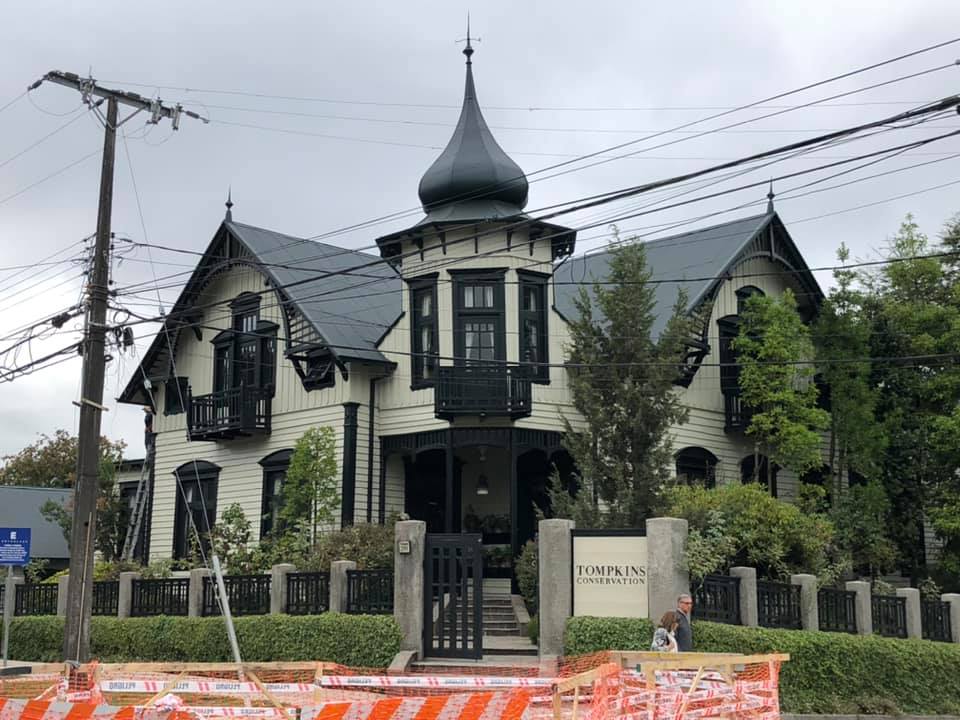
Tompkins Conservation was founded by Kris and Doug Tompkins. Doug also founded The North Face outdoor gear company in 1964. They have four main areas of focus at Tomkins: Park Creation, Restoration, Ecological Agriculture, and Activism. They believe in the enduring value of wilderness and they live this through creating national parks. These parks are open for the public to see and learn about the native species. They see restoration as a “growth industry” and the work of the future – since humans have degraded so much of the planet, they have almost endless opportunities to return ecosystems to health. Tompkins says that they devote substantial attention to developing more ecologically sound forms of agriculture. They strive to preserve wildlands and develop model organic agricultural systems. They strive to make conservation a consequence of production.
We had a good debate with them about how many of their values align with most farmers in production agriculture. Production agriculture is living off the productivity of the land and the farmers have a major incentive to take care of the land they are farming. If the farmer takes care of the land and the environment, it will take care of the farmer. We discussed the conservation efforts of those in our class and how they take care of the land and the wildlife that call it home. We had a good debate, but they are rooted in the direction of their publications and were being paid by donations from people who don’t like agriculture. So, we agreed to disagree. It is always good to learn the opposite viewpoint, much the same as when we visited HSUS in Washington, D.C. We ate lunch lakeside at the Radisson hotel and then headed off to the Puerto Montt airport to begin our journey home to Oklahoma.
Saturday, February 29, 2020
Our flight back home landed at the DFW airport on Saturday morning around 5:00 a.m. We were tasked with collecting our luggage, navigating U.S. customs, and saying goodbyes to a few of our classmates before catching our connecting flight back to Oklahoma. All in all, the process moving through the DFW airport was flawless and before you knew it, we were on our connecting to Oklahoma City. Our group was exhausted from an overnight flight from Santiago and two weeks full of nonstop activities. It seemed like we snapped our fingers and were in the OKC airport dealing out everyone’s luggage before quick hugs and final goodbyes. Our class scattered like a covey of quail and everyone went in different directions on their final journey back home and to their families.